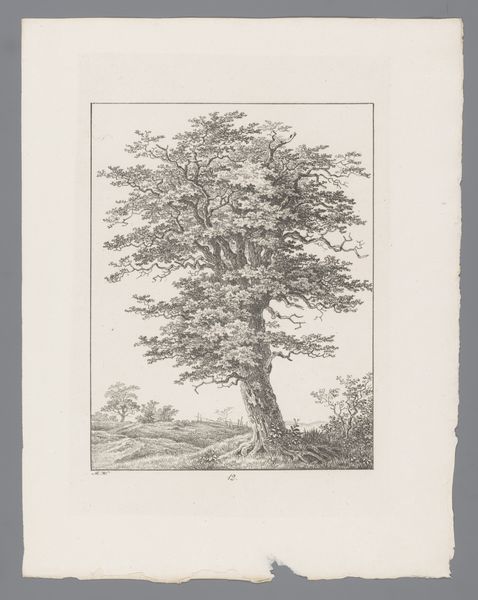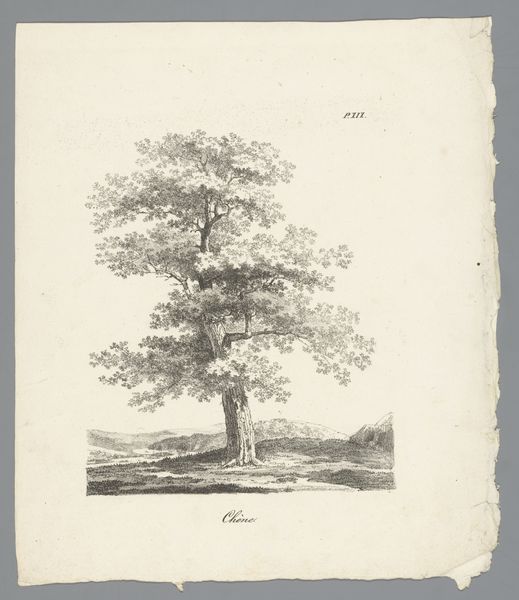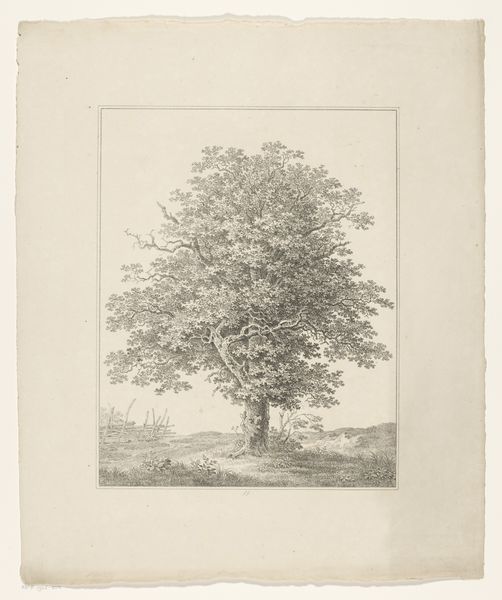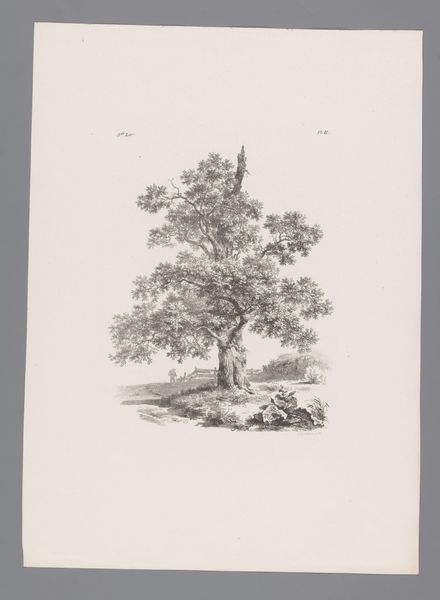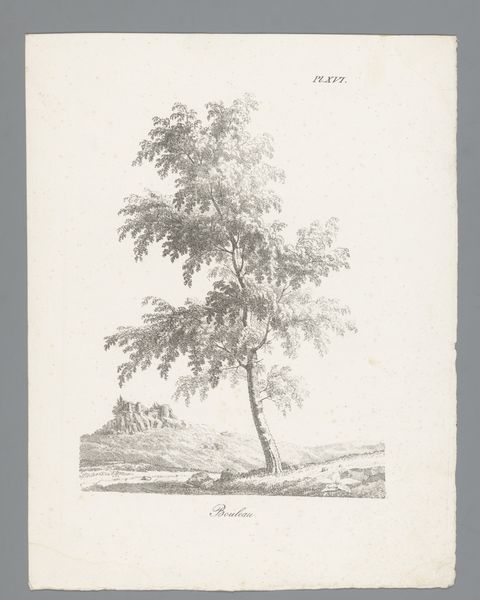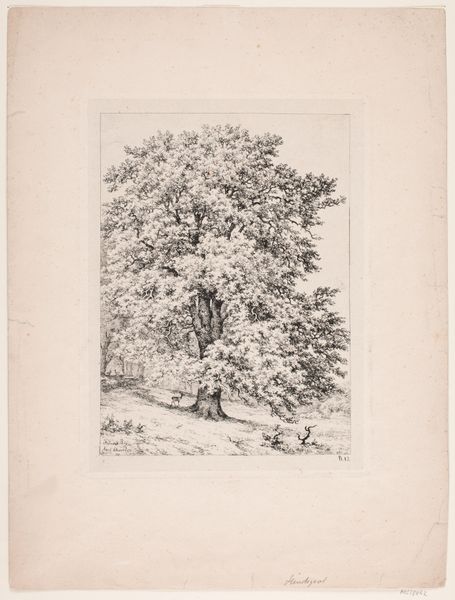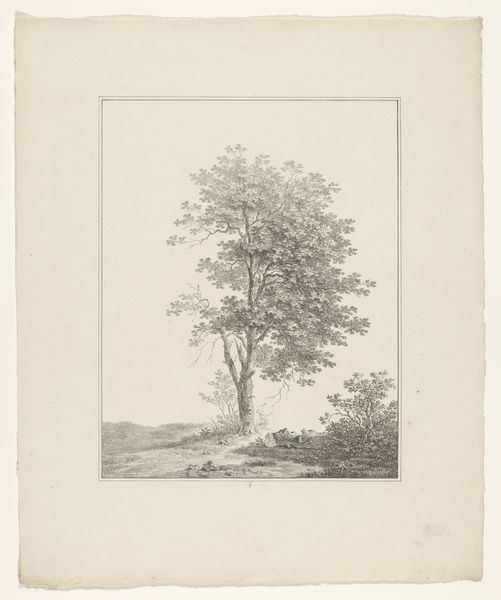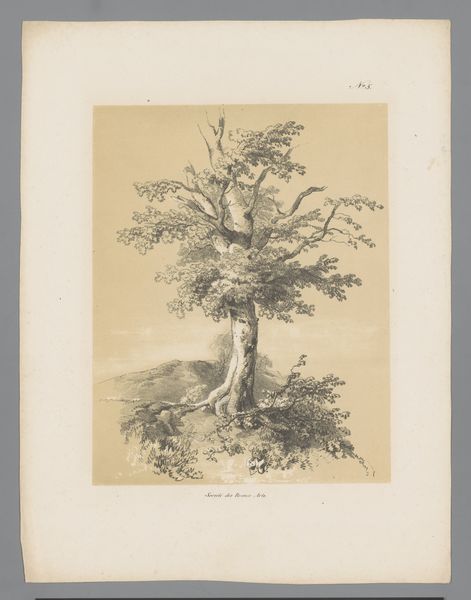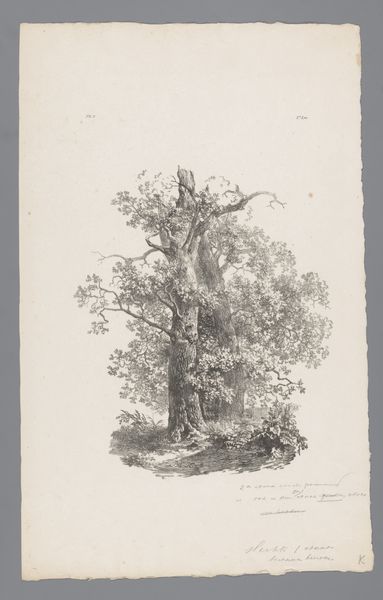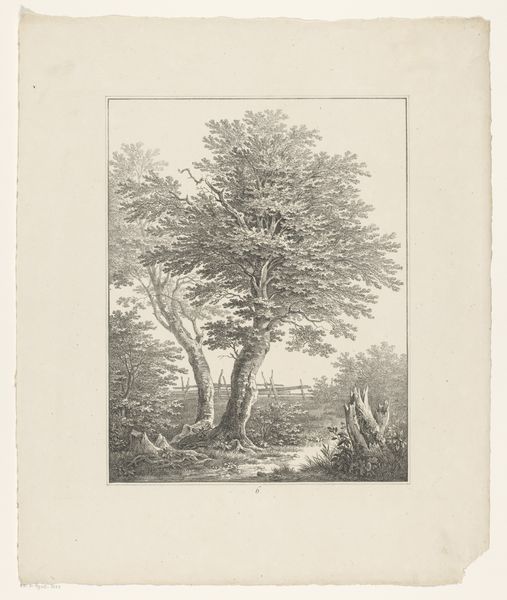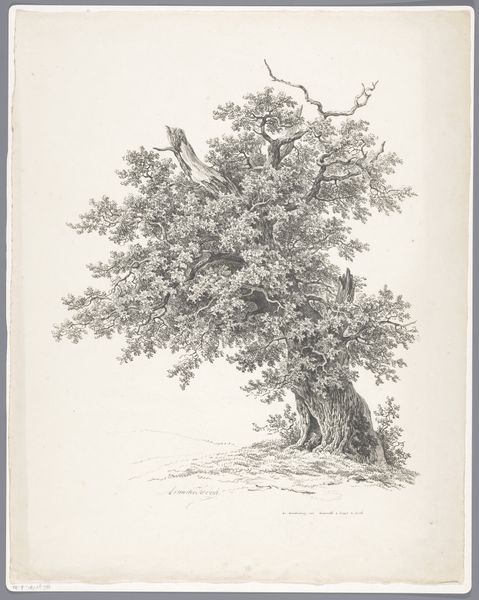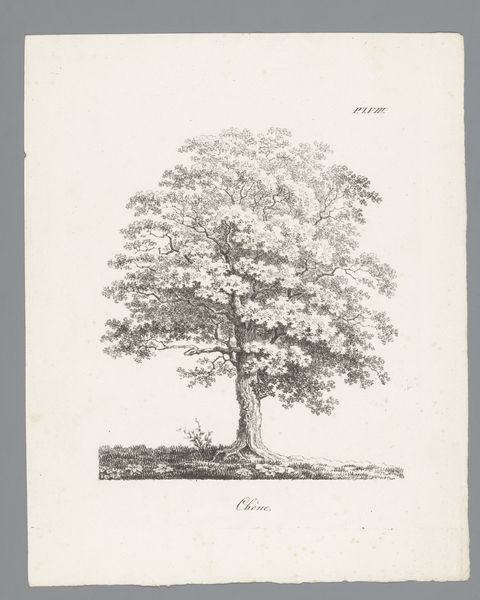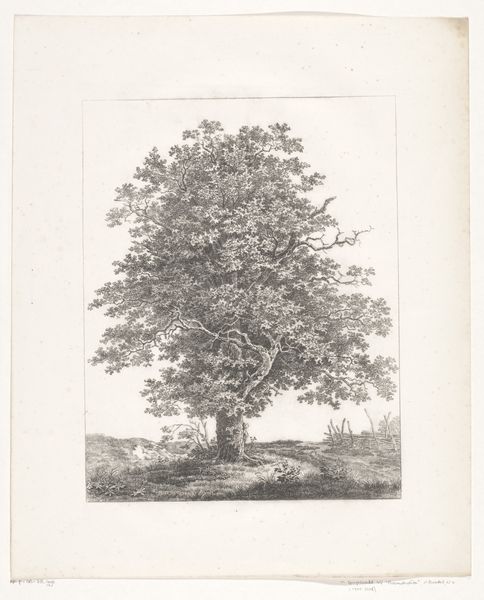
drawing, paper, pencil
#
drawing
#
landscape
#
paper
#
romanticism
#
pencil
#
realism
Dimensions: height 375 mm, width 290 mm
Copyright: Rijks Museum: Open Domain
Curator: The precision here is striking! "Great Tree Next to a Tree Trunk," crafted in 1823 by Max Josef Wagenbauer, presents an interesting perspective into early 19th-century artistic fascinations. Editor: It is captivating. It almost has an allegorical presence. Something about that single, grand tree towering over the landscape and that tree stump really feels almost somber in its quiet realism. Curator: Absolutely, and it aligns perfectly with the Romanticism movement. It's an embrace of nature that is reflected here. Look at the details captured using only pencil on paper! You have subtle graduations of light, textures of the bark, and leaves meticulously rendered, making it a key example of Romantic landscape. Editor: It also feels almost timeless. While it's certainly a specific tree in a specific place, that tree evokes a sense of resilience, perhaps even wisdom. The stump suggests time's passage, and I can imagine other meanings like loss or just regeneration. It could have been a common symbol of life for viewers of the time. Curator: Considering its position within a society then transitioning through the Industrial Revolution, the image serves as a potent reminder. There was a collective move to value and document nature during a period where it was increasingly threatened by societal and industrial changes. That sense of an elegiac beauty in a world being fundamentally changed feels crucial. Editor: It's definitely about cultural memory, isn't it? An attempt to hold on to an older reality, placing value on nature. The very act of drawing this, as opposed to developing farmland for example, underscores the social importance of appreciating nature. It prompts the viewer, even now, to reflect on how we relate to nature and the passage of time. Curator: In the 1820s, such work played an active part in that ongoing dialogue. The artistic and the societal contexts entwine; that’s the key. I come back to this idea, as it would be publicly displayed, shared. The subtle skill displayed in the pencil rendering reinforces the artist’s admiration for this natural presence and would influence the public’s appreciation of the German countryside as well. Editor: It’s fascinating how a seemingly simple image like this drawing speaks to cultural memory. Curator: Agreed. It underscores the power that art has to quietly make a statement.
Comments
No comments
Be the first to comment and join the conversation on the ultimate creative platform.
